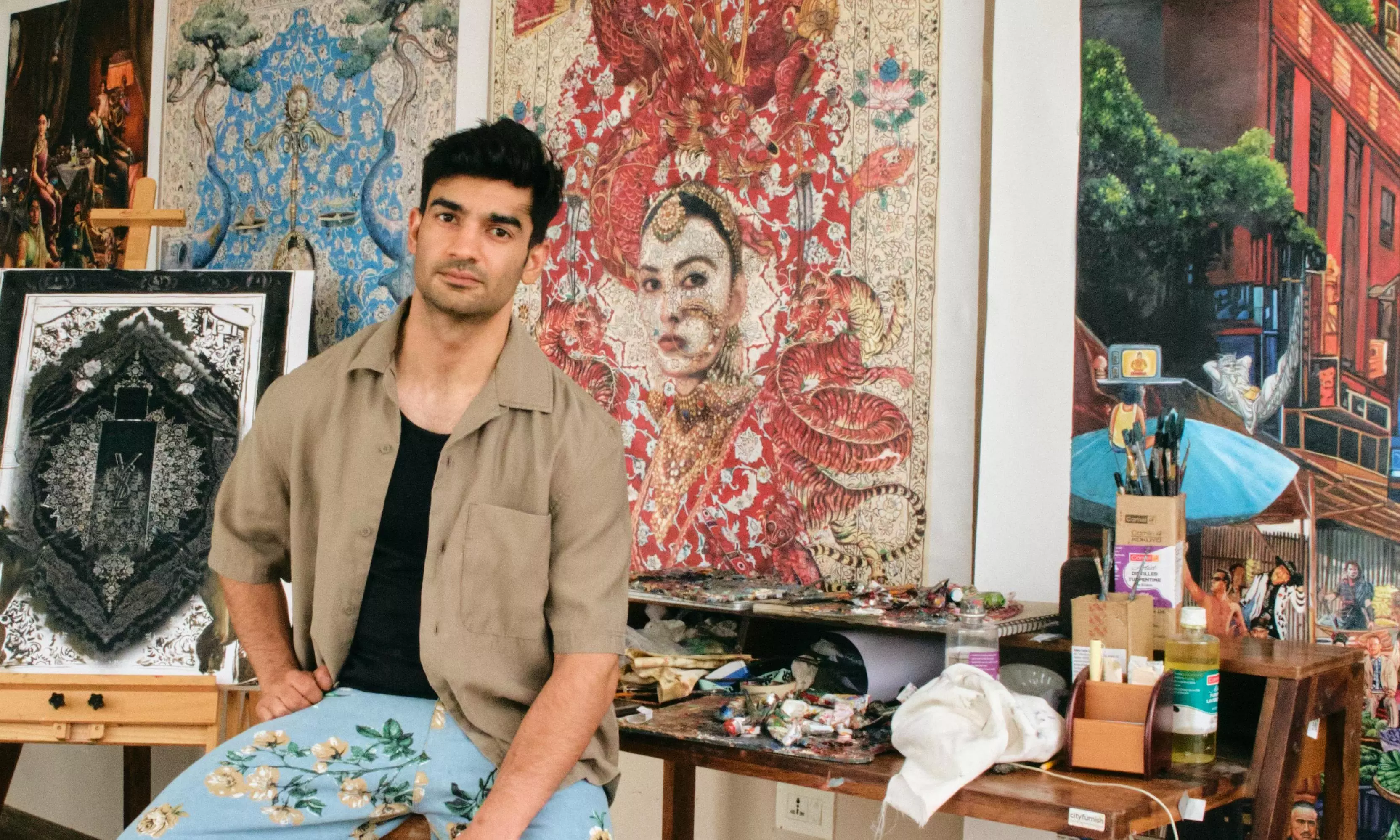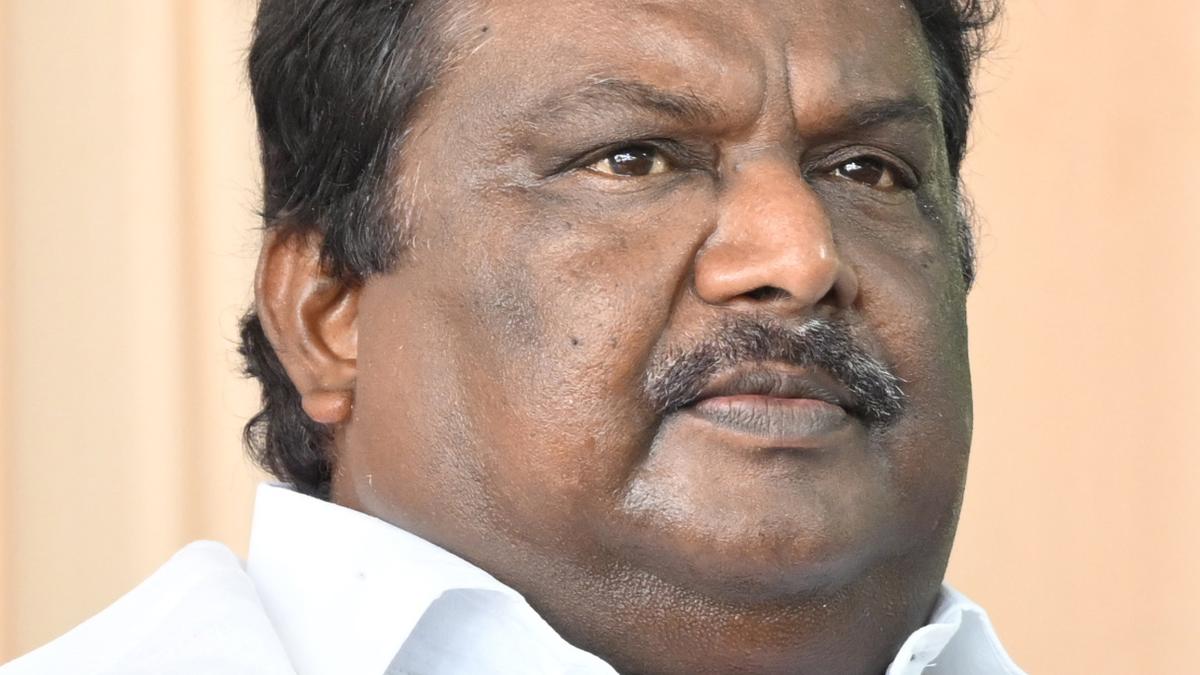By Reshmi AR
Copyright deccanchronicle

At just 27, contemporary artist Abhay is already making waves with Roots & Rebellion, his solo exhibition at Bikaner House, New Delhi. Framed around the question “Why am I the way I am?”, the show is an intimate exploration of inheritance, identity, and the restless spirit of rebellion that shapes his generation.Your exhibition is framed around the question ‘Why am I the way I am?’-what did you discover about yourself in the process of making this series?My exhibition is framed around the question, why am I the way I am? Six months ago, when I was invited to do a solo show at Bikaner House, I felt both overwhelmed and humbled. At such a young age, exhibiting in a space of that stature felt like a huge responsibility. That’s when I realised the curation had to come from a very personal place and it had to reflect who I truly am. For me, that identity rests on two strong pillars: inheritance and upbringing, which I call roots, and the other, my constant urge to question and break away, which I call rebellion. Together, these two forces shape me, and so the show became Roots and Rebellion. You have drawn from the patterns of carpets to elevate what’s usually ‘underfoot’ onto walls as art. What drew you to this metaphor, and how does it connect to your sense of belonging?A few years ago, I had this incident where a really big project fell through because they felt it was disrespectful to put carpets on the wall. And that stayed with me. I kept thinking, isn’t the whole point of being a contemporary artist to challenge these set notions, to create a breakthrough from what history has told us things should be? If carpets have always been meant for the floor, then I wanted to take that very idea and flip it by creating something maximal and putting it on the walls. For me, that connects to my sense of belonging because I’m layering my own contemporary perspective on something deeply rooted in history. In that way, it feels like I’m bringing the past and the present together, while also imagining the future.Your works blend a distinctly Gen Z sensibility with the weight of Indian history. How do you navigate this balance between rebellion and rootedness?I don’t really think there’s such a thing as balance between rebellion and rootedness, you know. For me, it’s more about what you’ve been exposed to and what stays with you. When I was in the US for five years, I really wanted to be an artist, but at that time I was just copying other artists, trying to figure out my own style. The real change came when I moved back. I suddenly realised there was no real sense of belonging in my heart, and it hit me kind of late. But once it did, I just started putting out what I already had inside me, this mix of western influences and my Indian sensibilities. That combination is basically my life, and my art just became a way of putting all that I’ve seen and felt into one place. You have spoken about recognising your cultural inheritance only recently. What sparked this moment of awareness, and how has it shaped your artistic voice?Cultural inheritance is very important to me. When I look at the older generation, I feel like they were always trying so hard to be what the western world was. Back then, the idea of being classy was basically if you could speak good English, you were seen as close to a white man as possible. But for our generation, I think it’s really shifted. It’s more about accepting who we are, embracing the brown in us, and putting that out to the world with confidence. That, to me, has personality and its own voice. Being influenced by something we don’t even belong to feels a little crazy now, and that realisation has shaped how I approach my art and how I want it to speak.Many of your pieces feel like conversations—sometimes solitary, sometimes imagined. Do you see yourself as more of a storyteller or a visual philosopher?Honestly, I’d say I’m a bit of both. But yes, for me, you really need to be a visual philosopher first if you want to tell stories through art.‘Roots & Rebellion’ marks a shift in your practice toward more mature experimentation. How do you see your work evolving in the next few years?Roots & Rebellion is a turning point in my practice. I can’t say for sure what direction my work will take, and that’s what excites me the most. What I do know is that I want to keep expanding, experimenting with furniture, exploring sculpture, and moving into forms that challenge me in new ways. At 27, every year brings more maturity, more perspective, and a deeper understanding of how the world around me is shifting. All of that naturally feeds into my art. I think the unpredictability is the beauty of it. I don’t want to be confined to one path, I want my work to keep evolving as I do.When you touch on themes like patriotism and identity, your work can take on larger meanings. Do you worry about how people might interpret it beyond your personal intent?Patriotism and identity are themes that resonate very…



